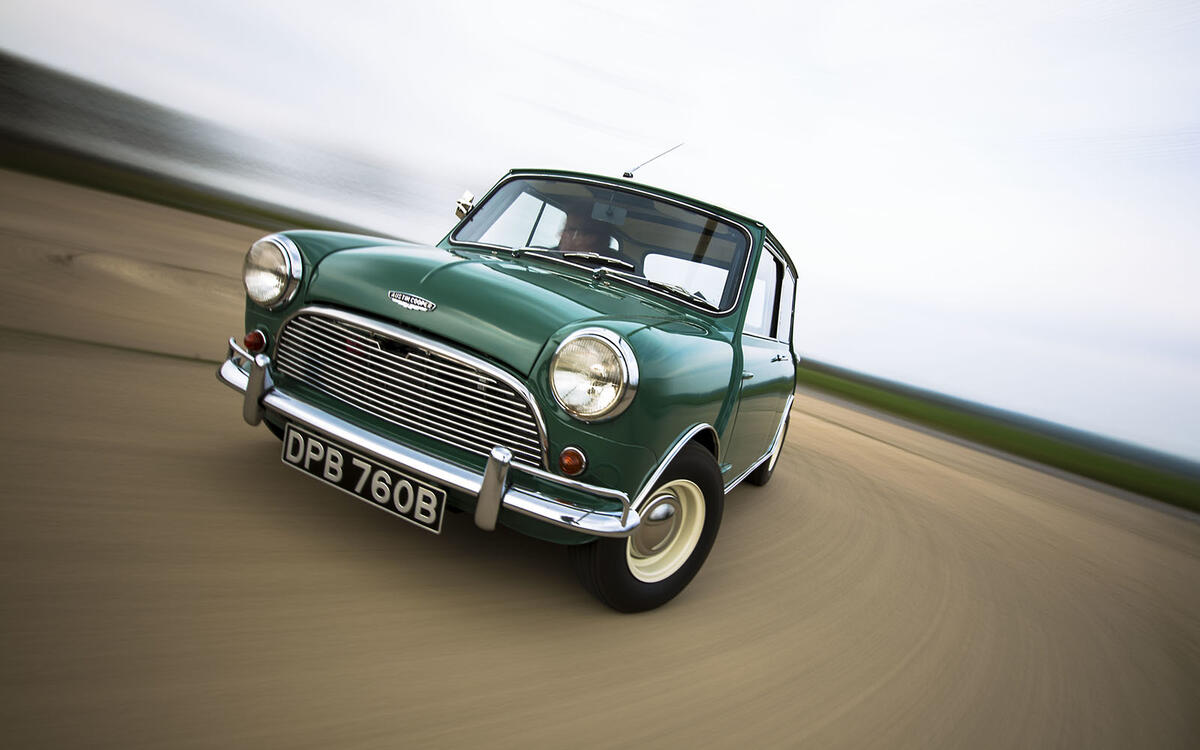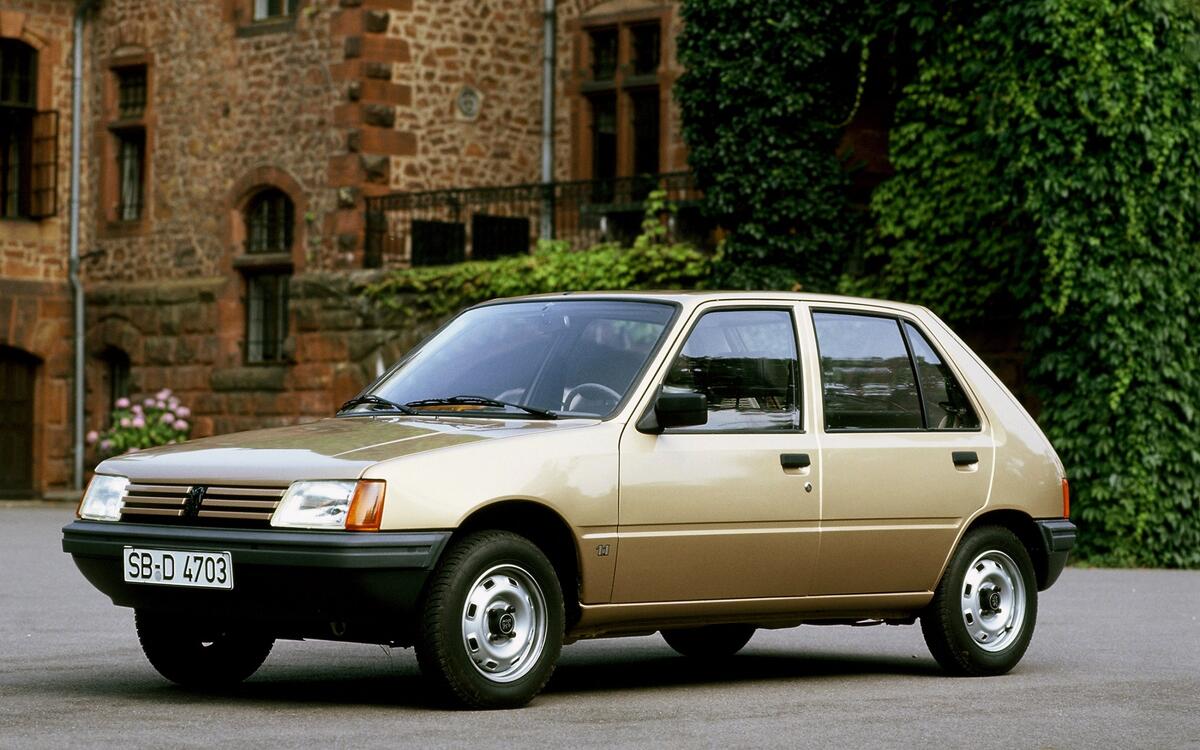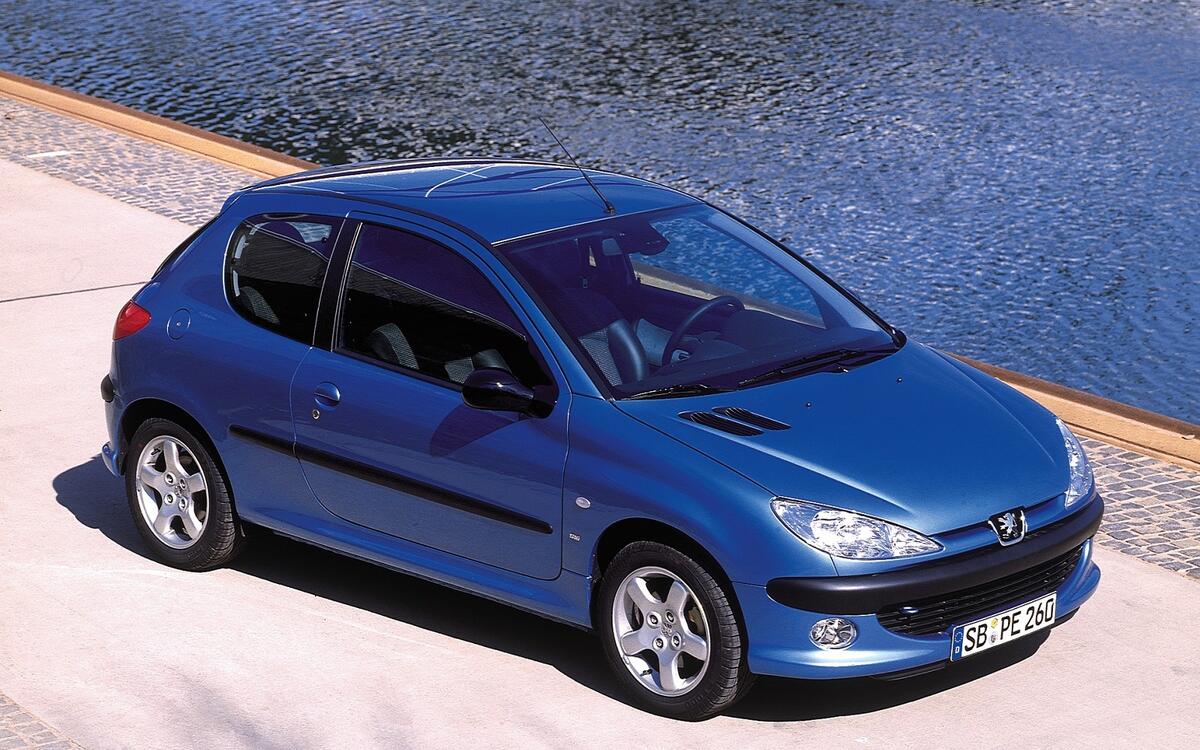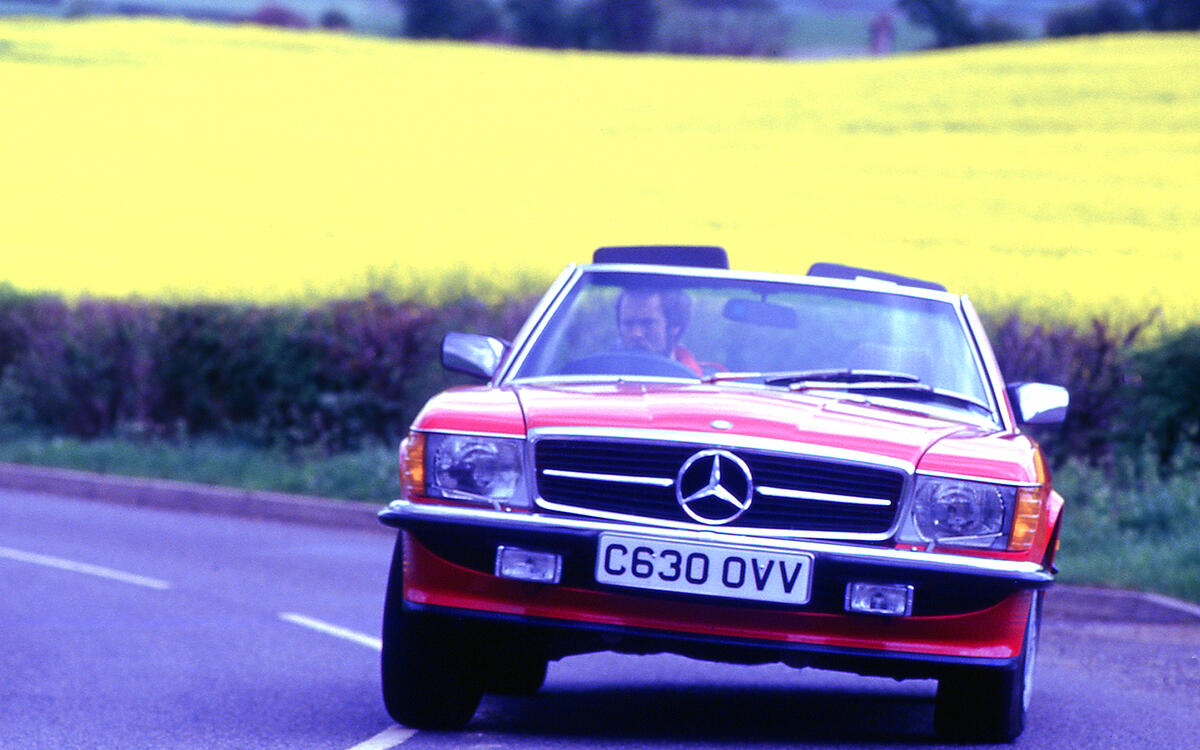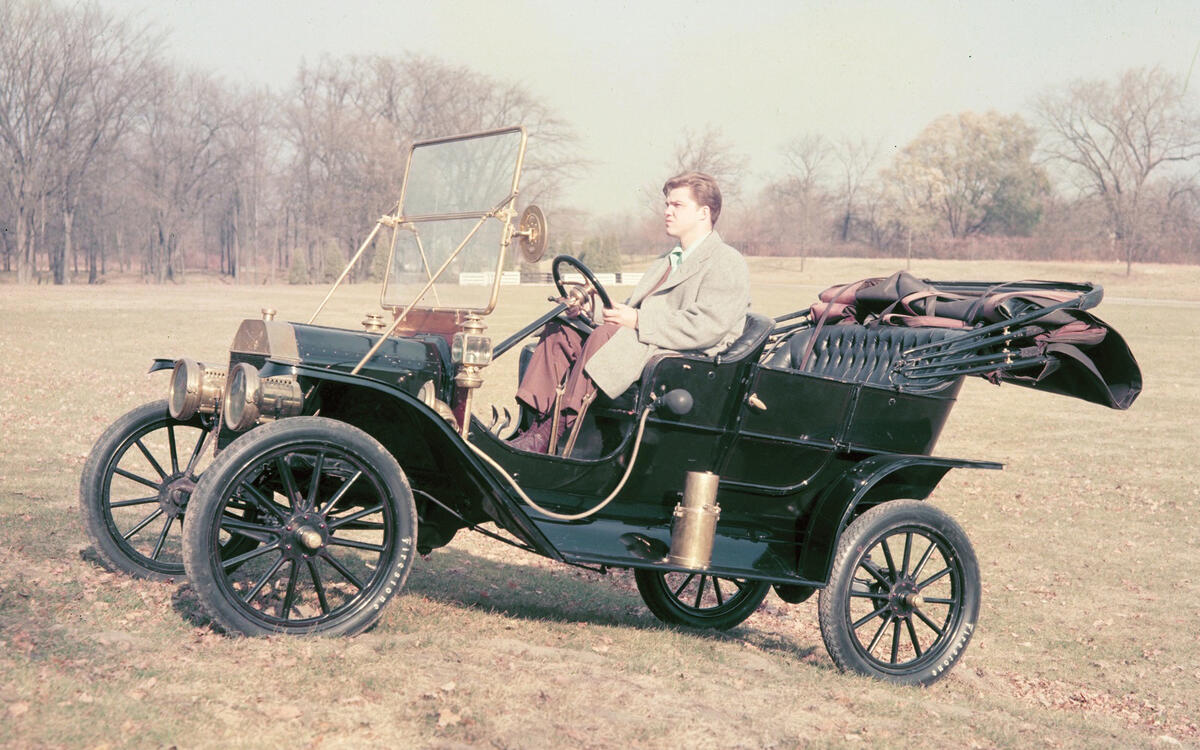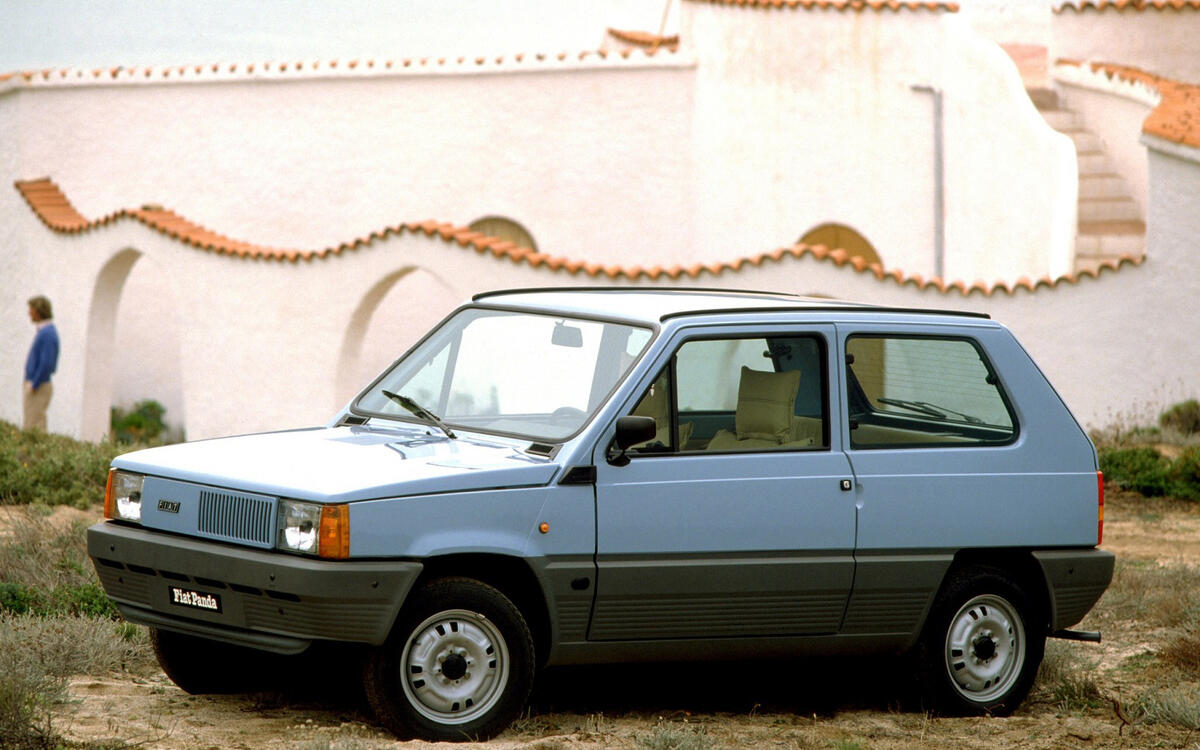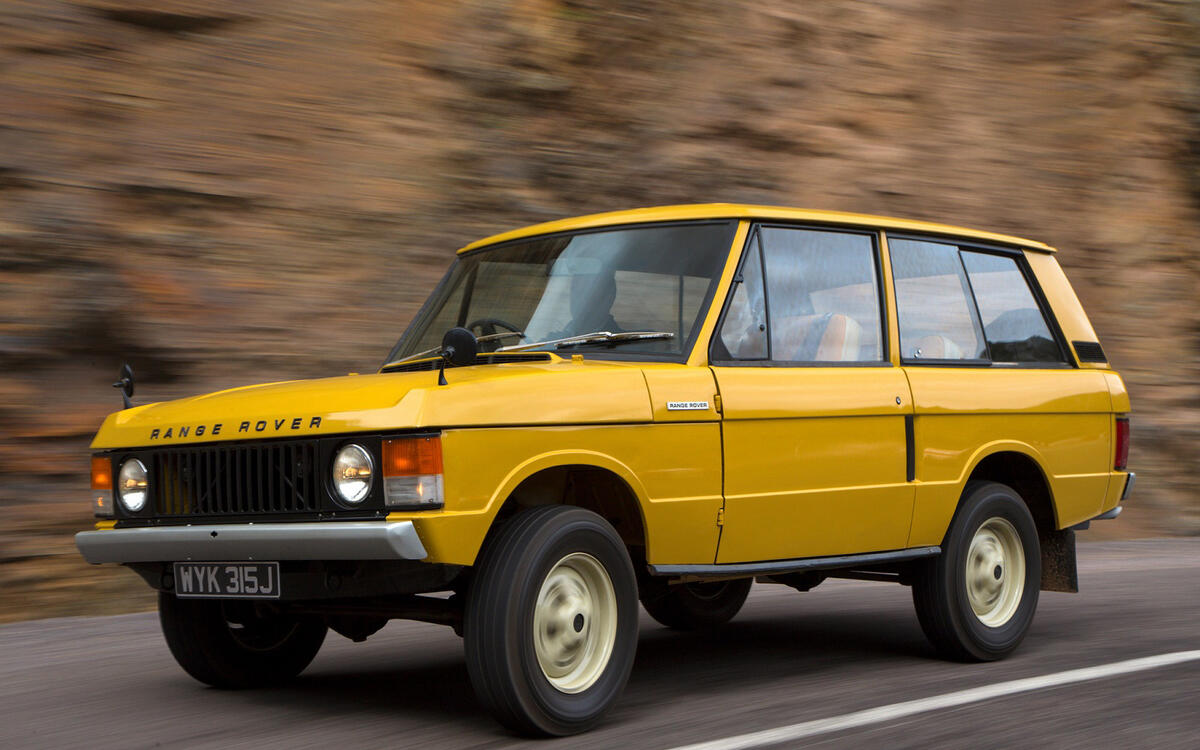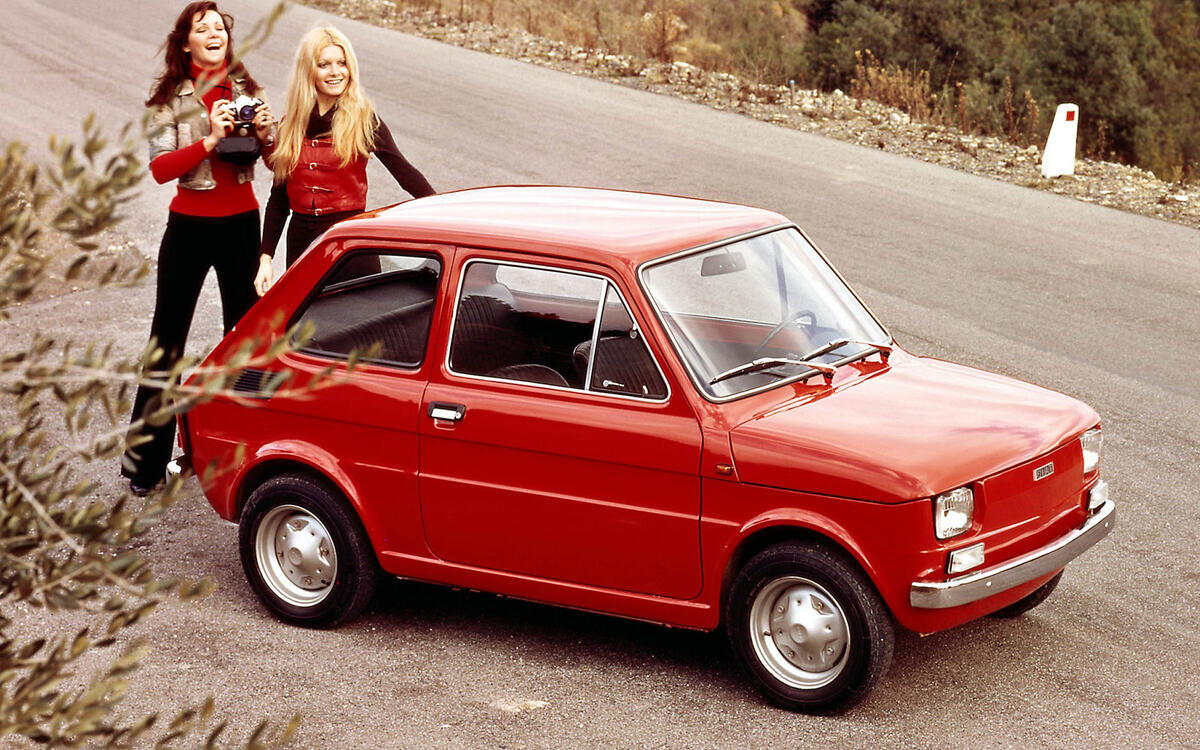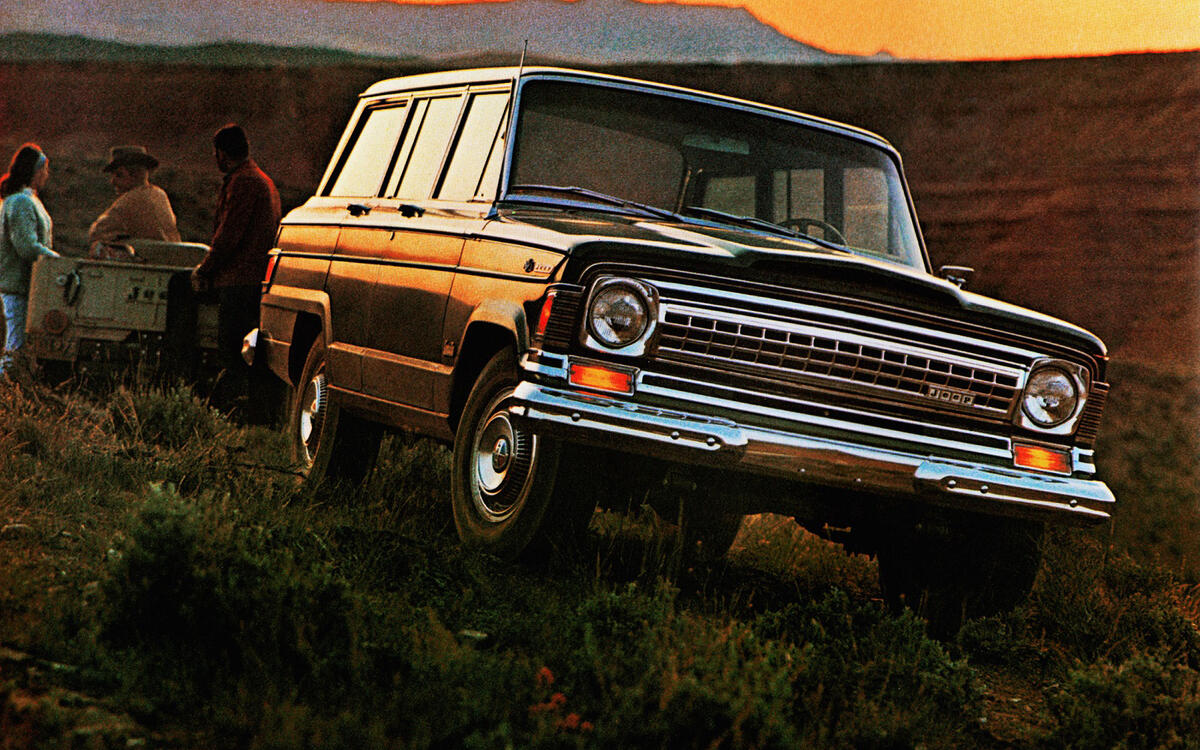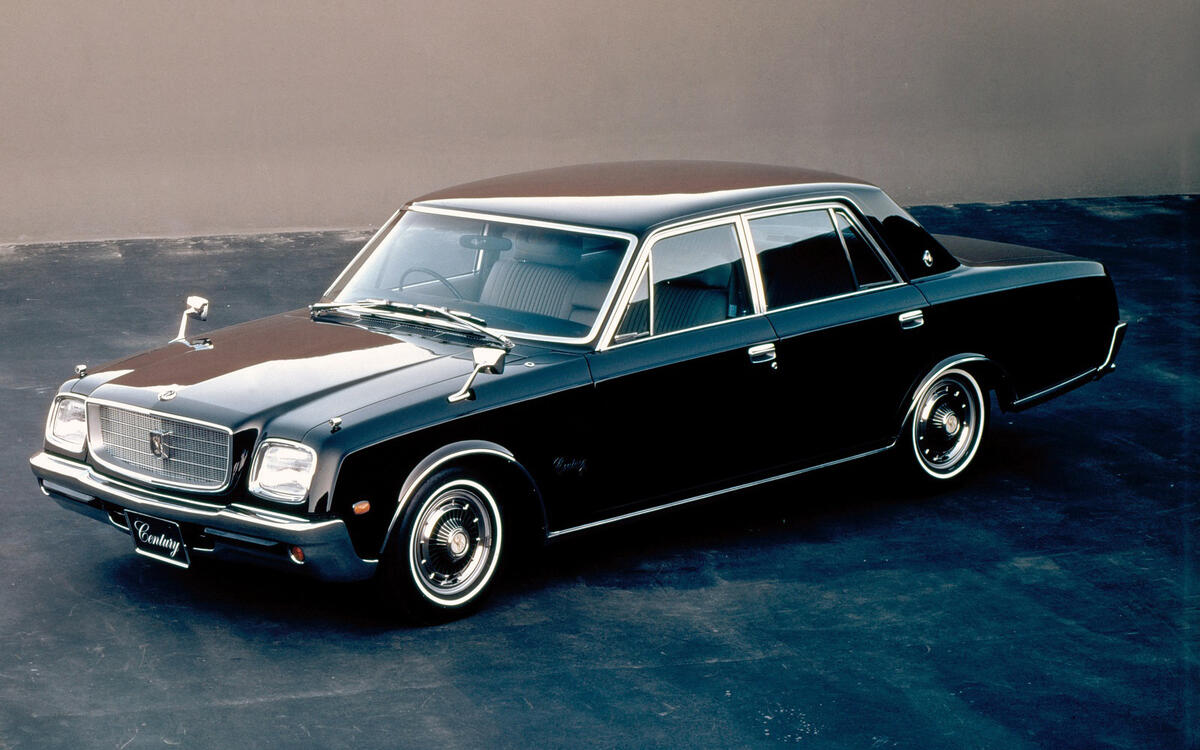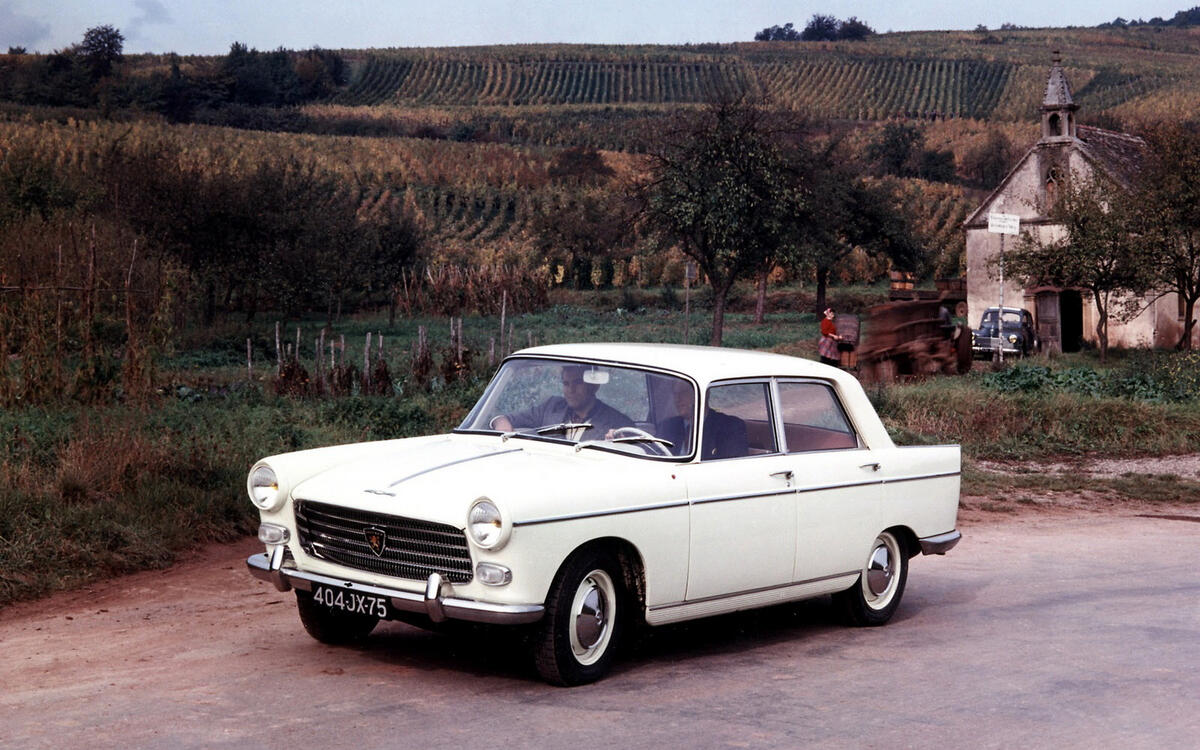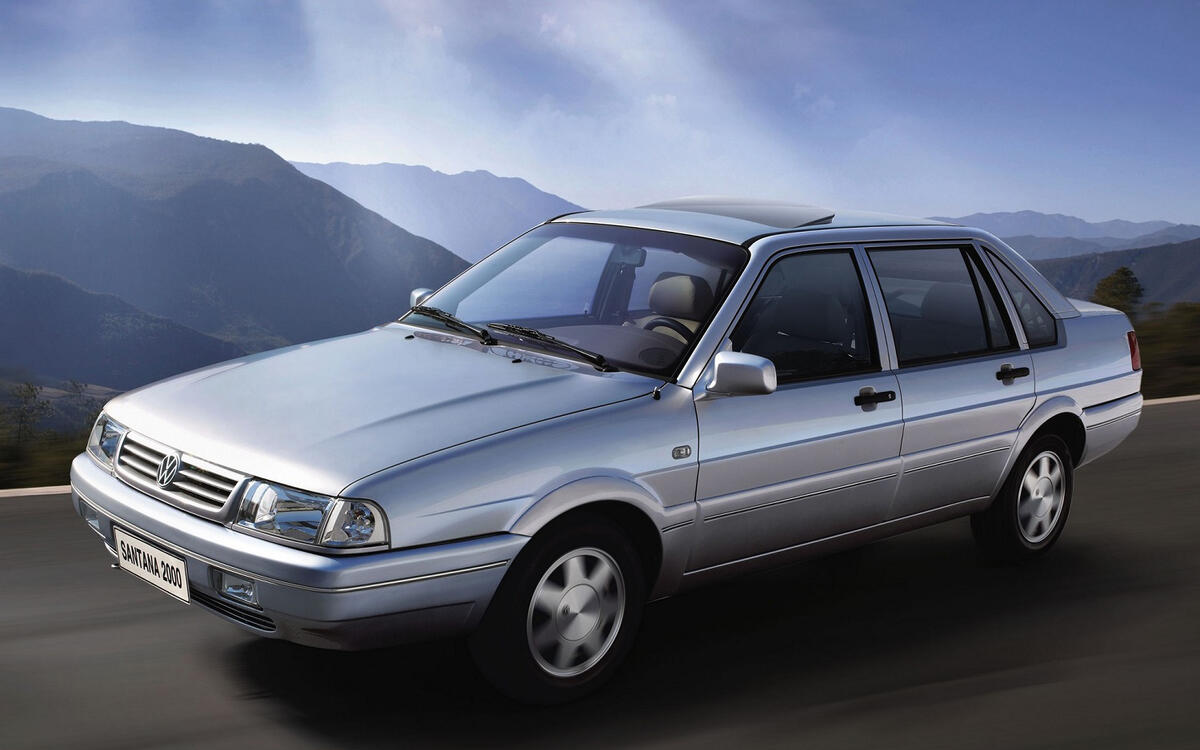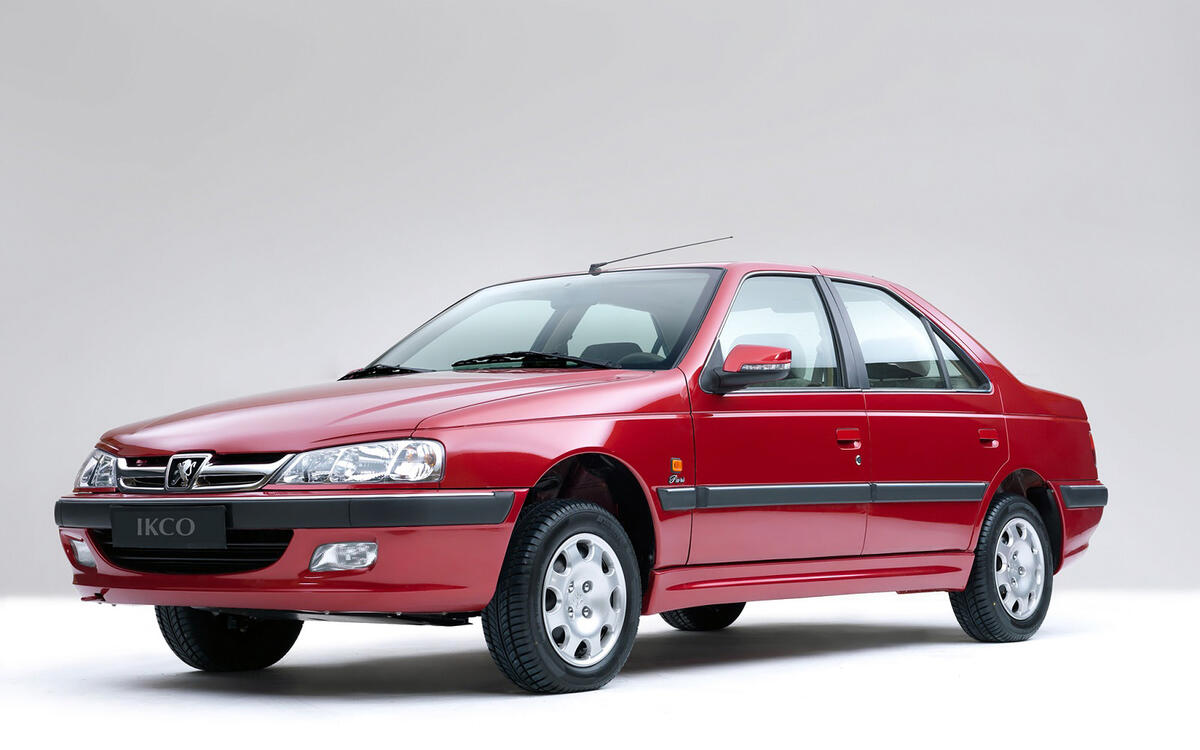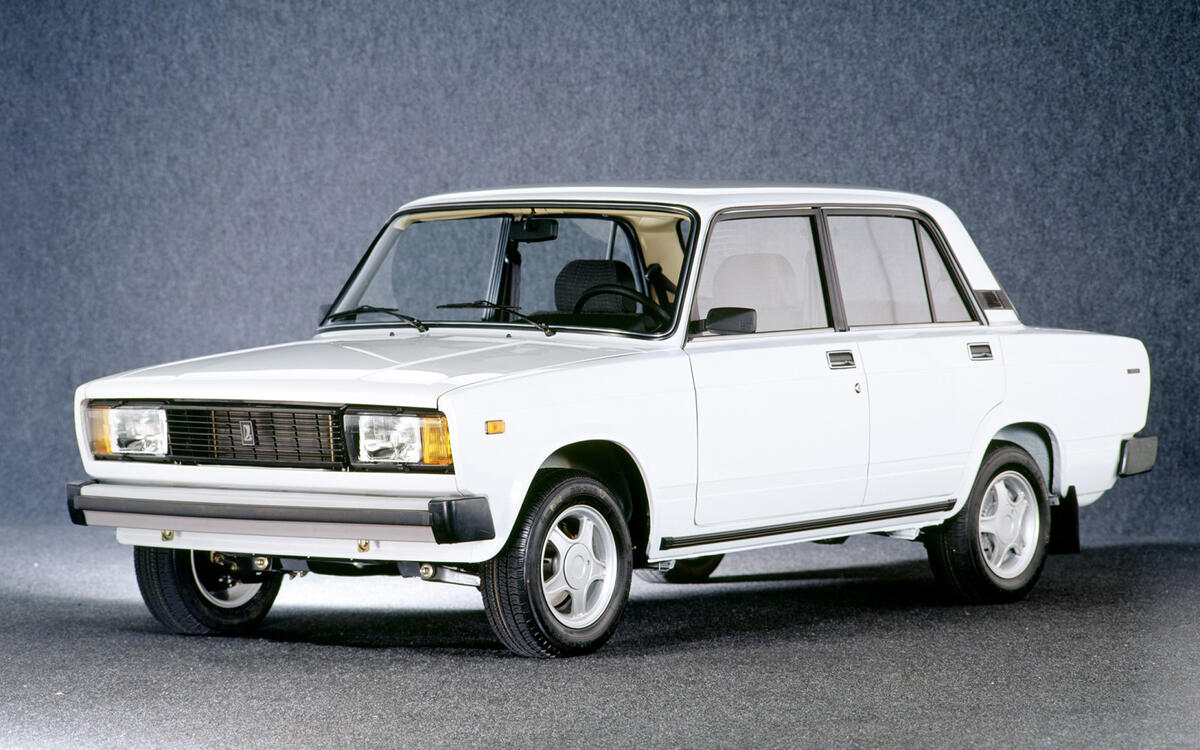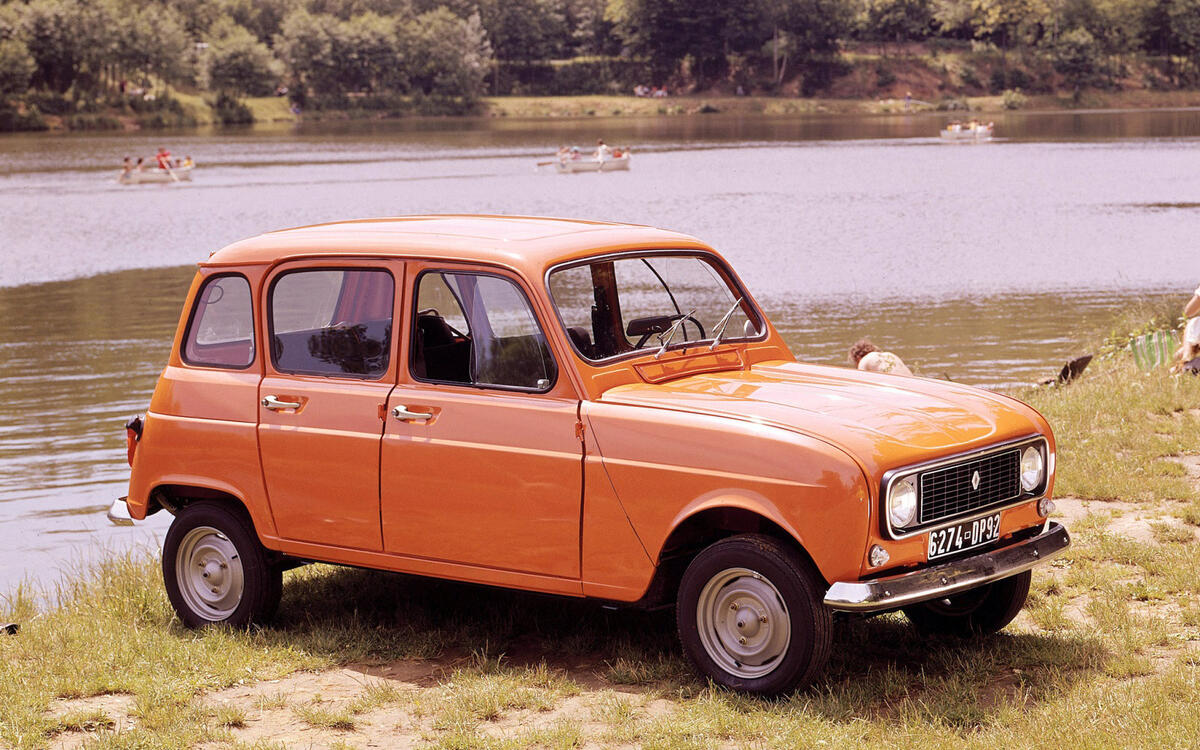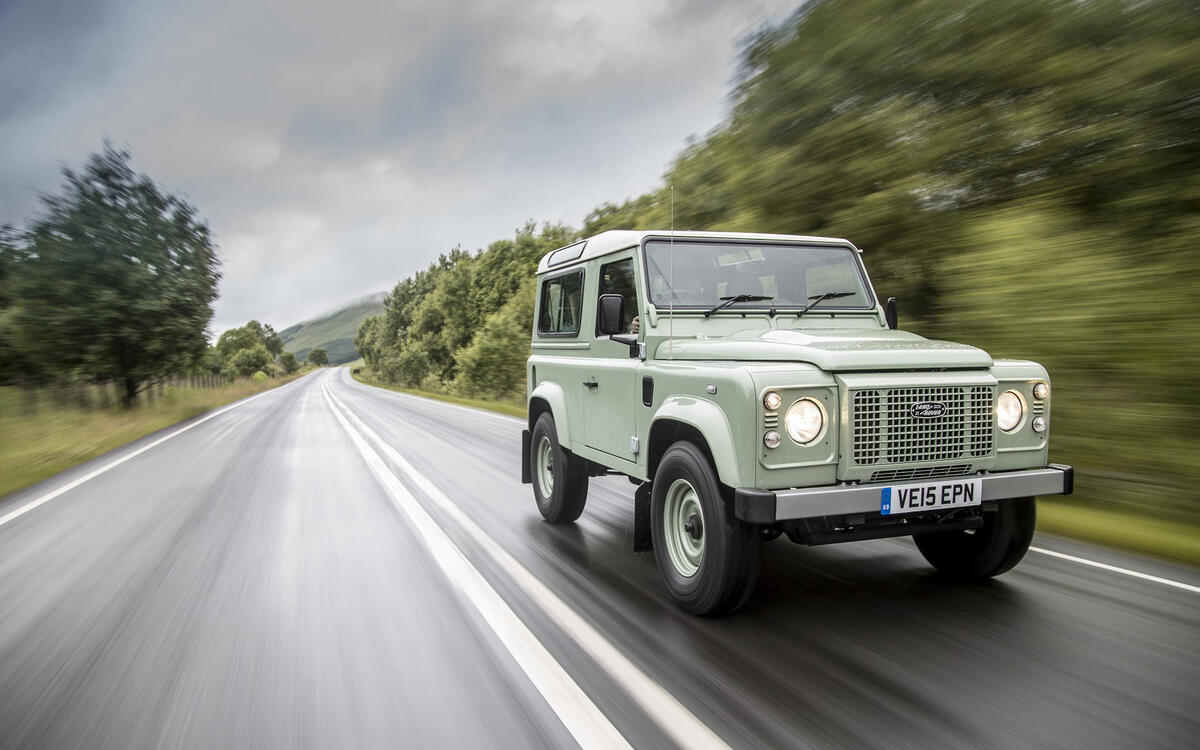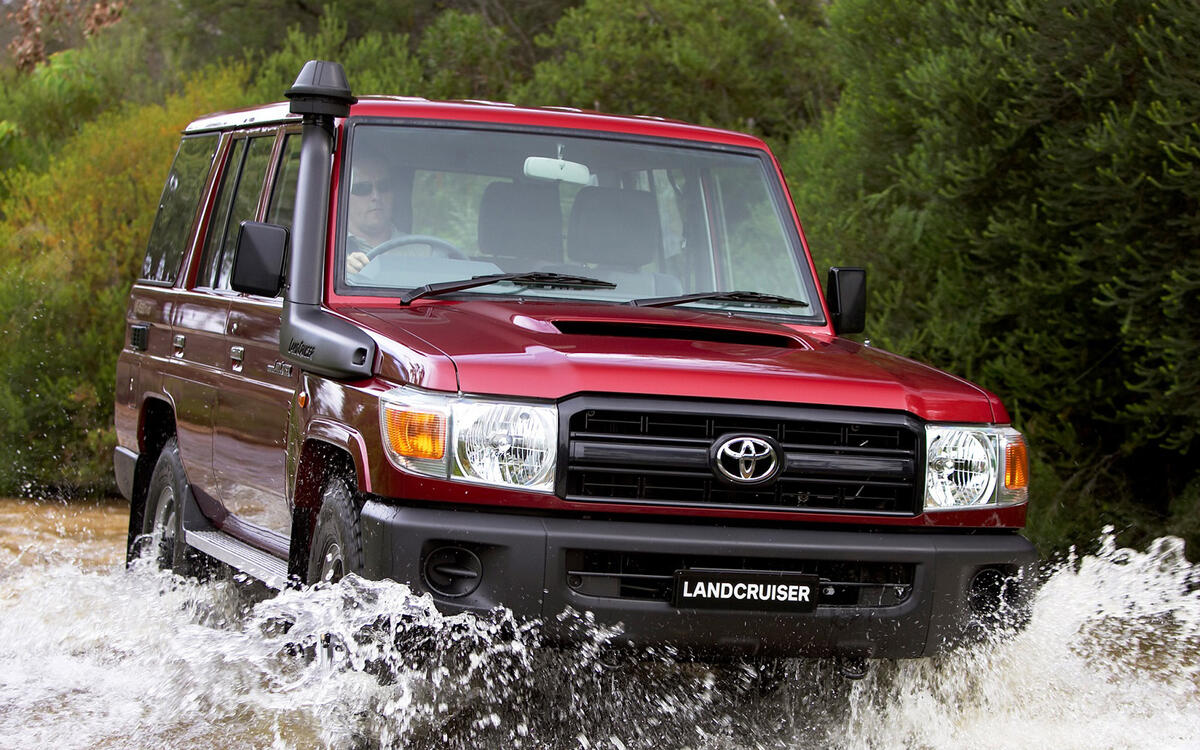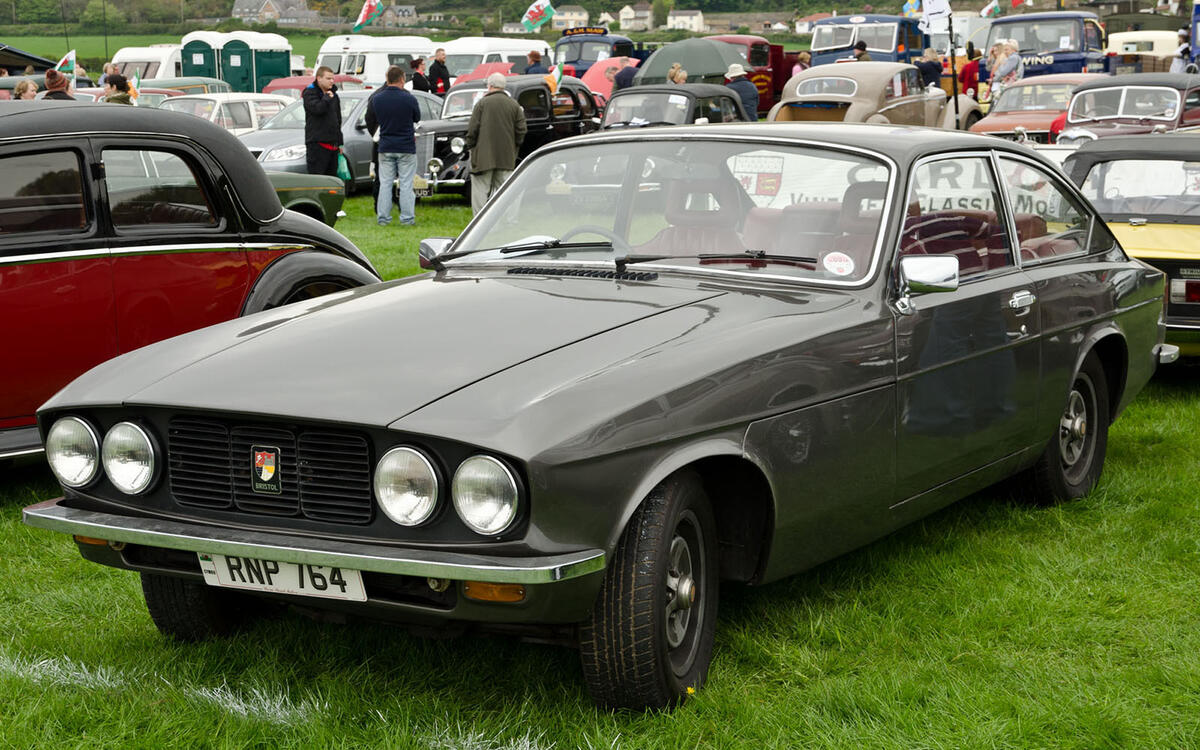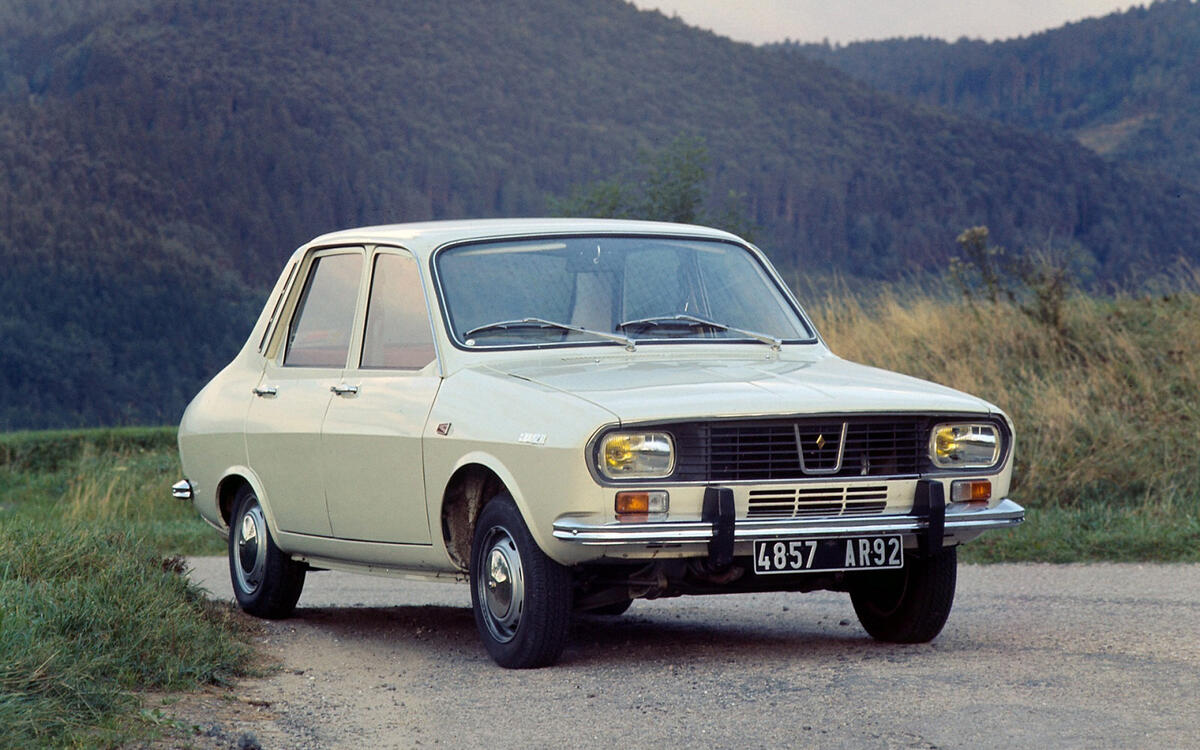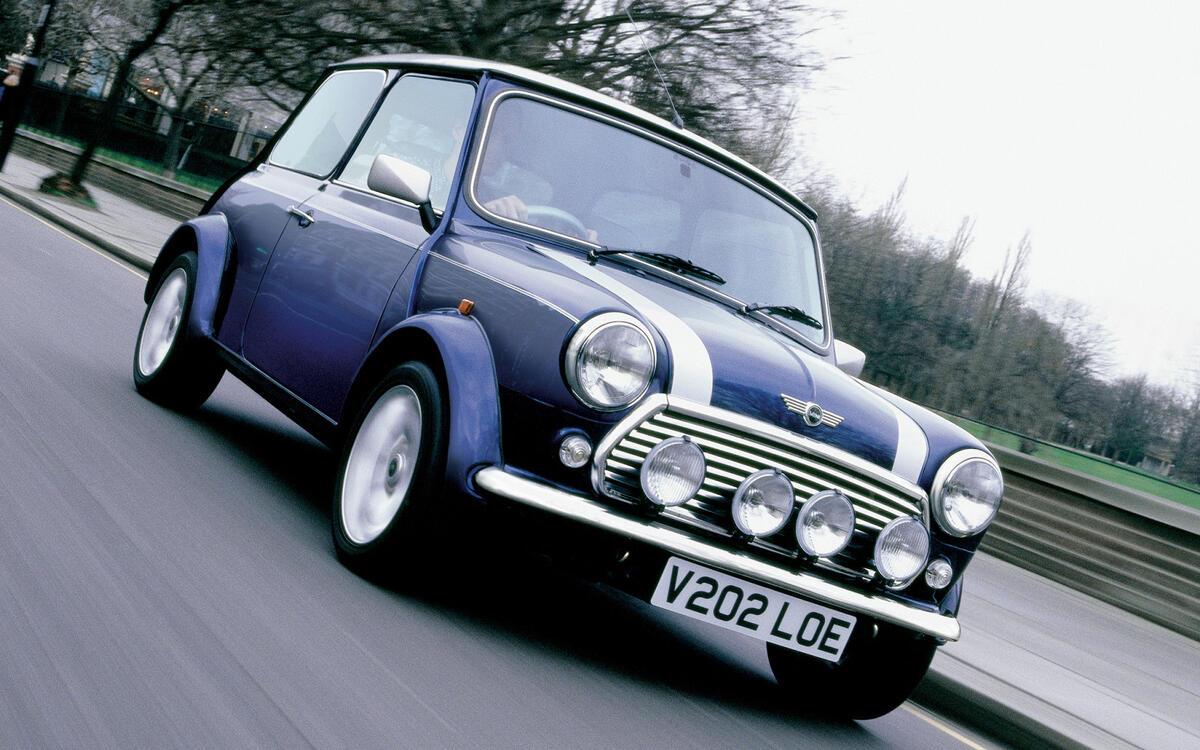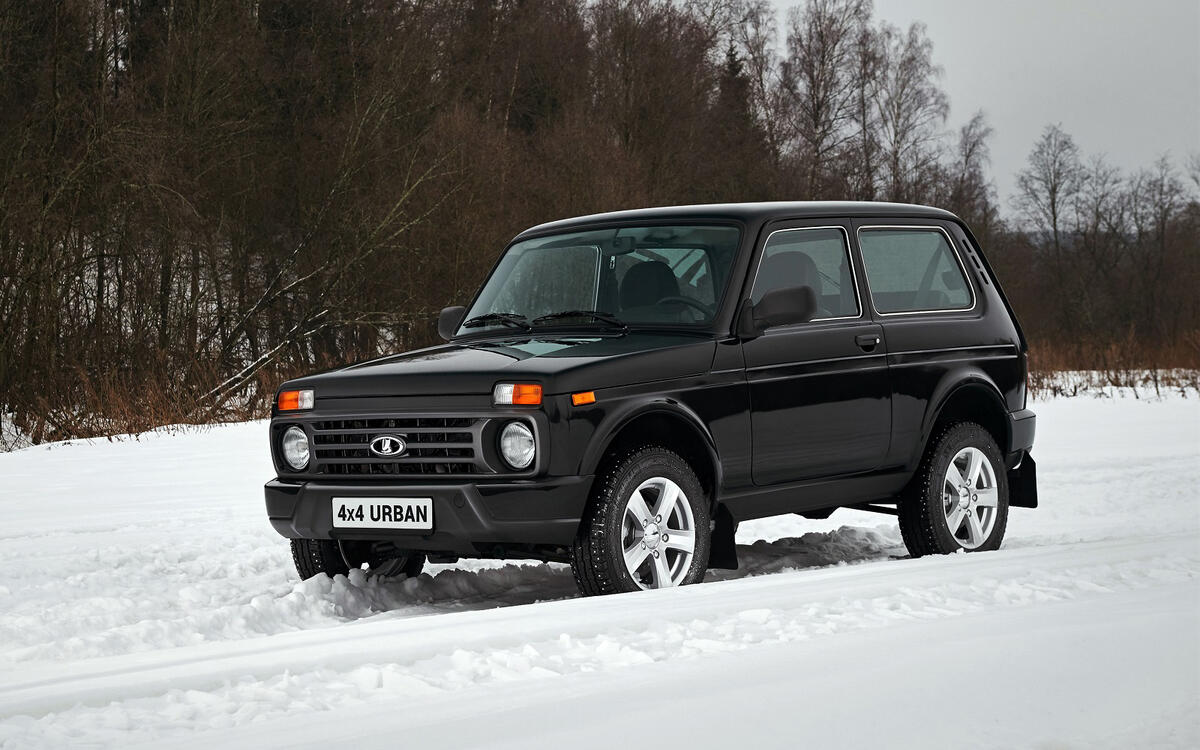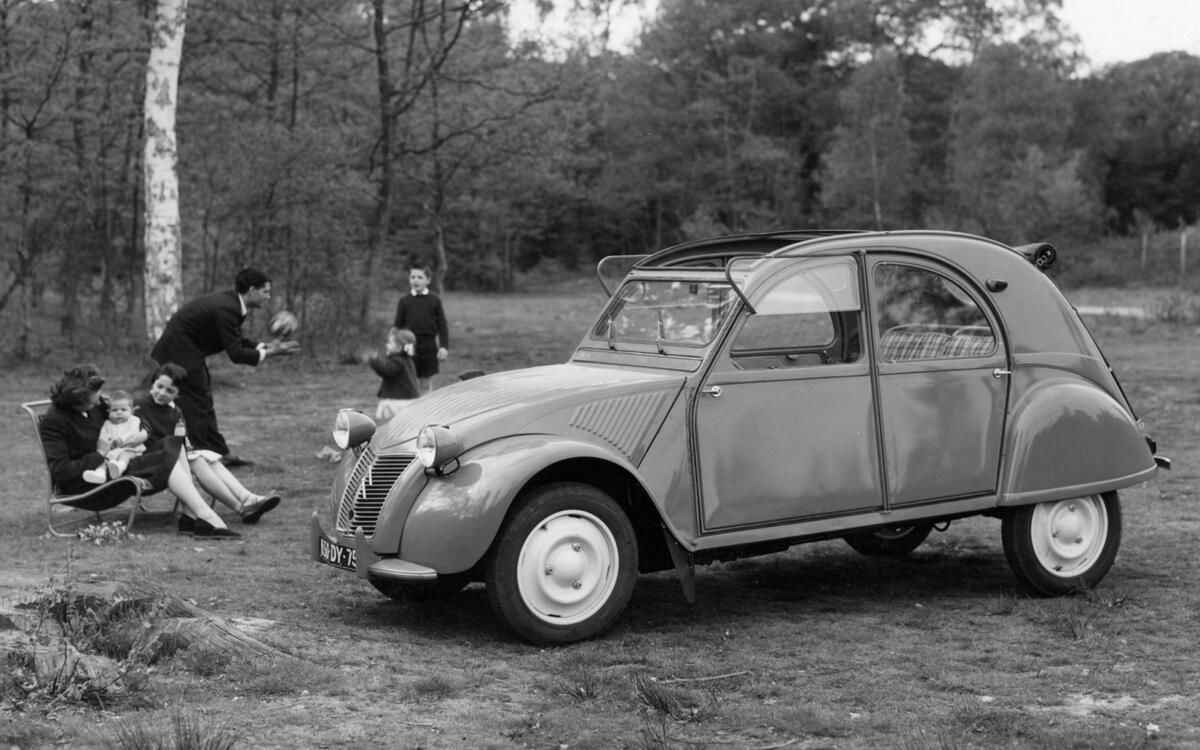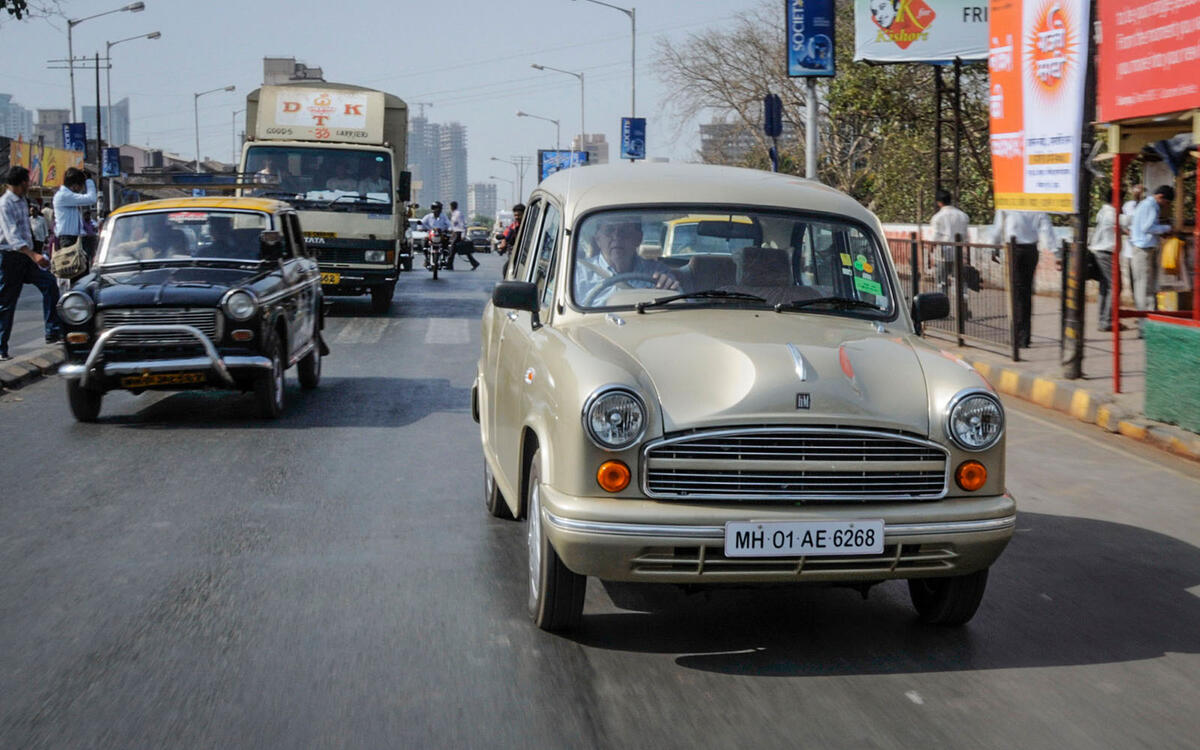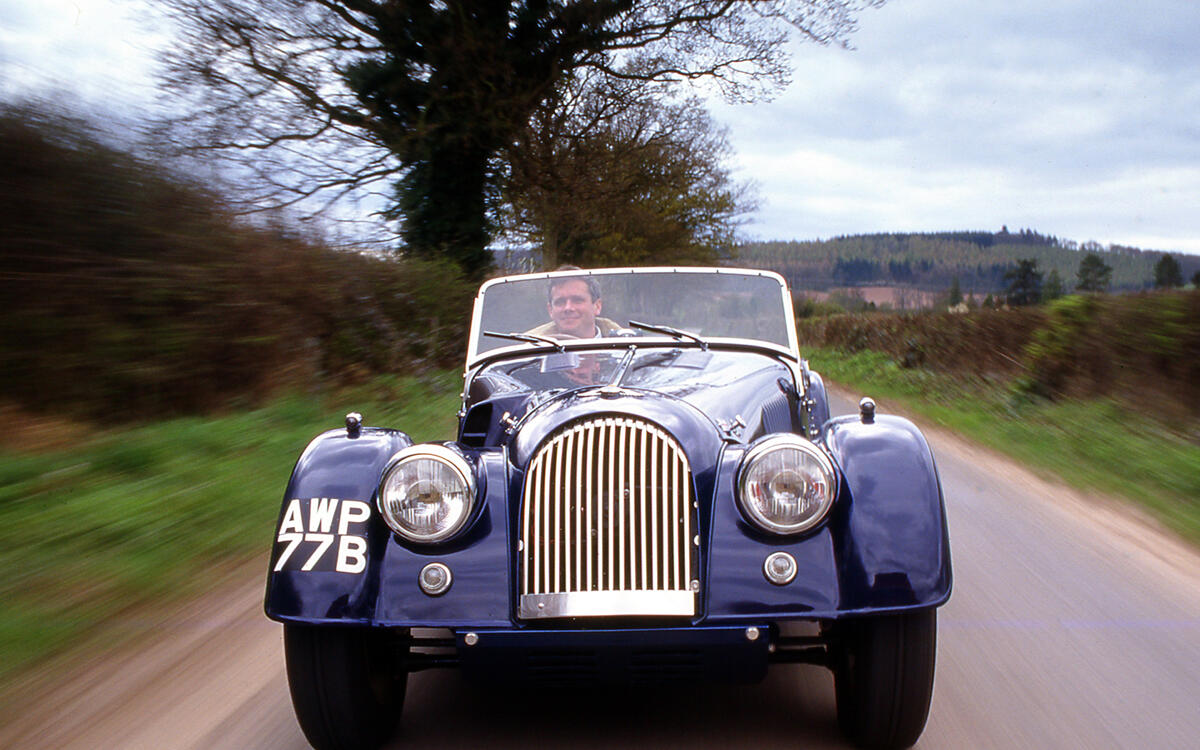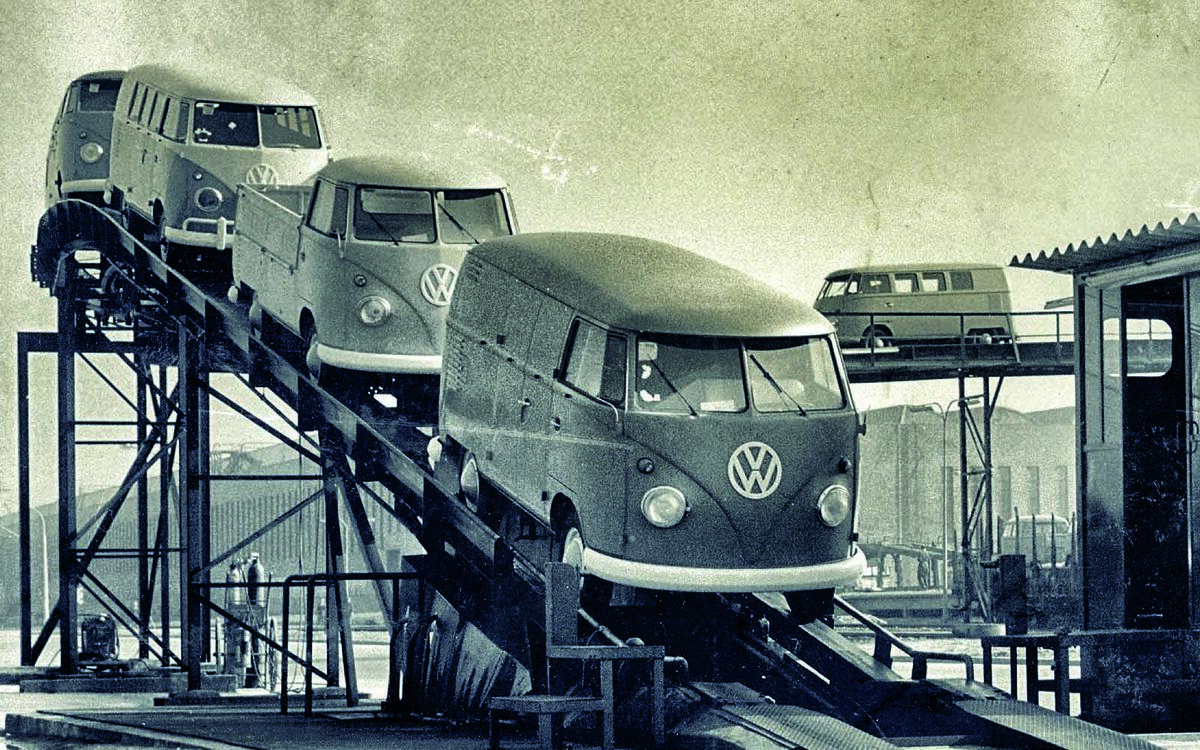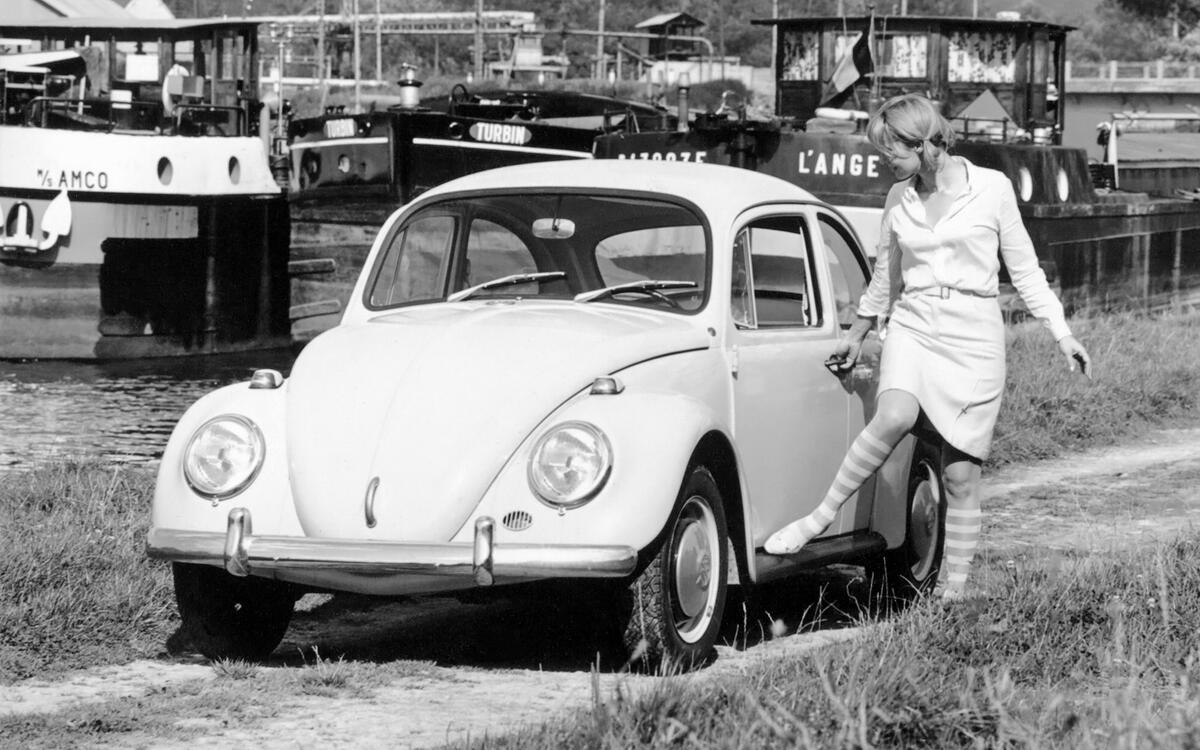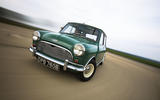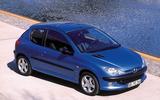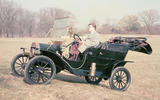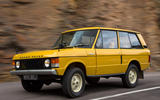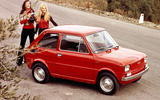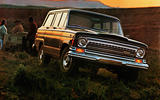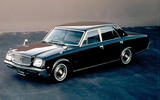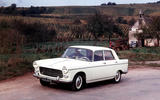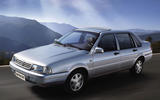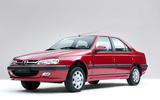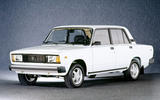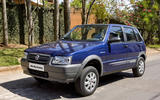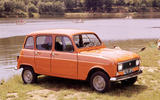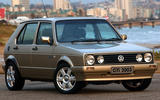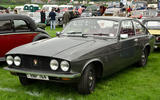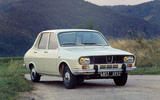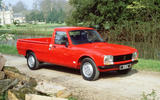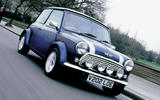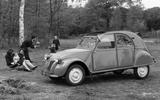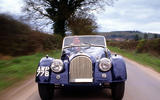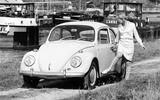 Slide of
Slide of
While nameplates are seemingly eternal, it’s rare for a car to remain unchanged for more than a decade.
Automakers redesign platforms to incorporate the latest advances in weight-saving materials and safety, and they tweak sheet metal to lure buyers into showrooms with the promise of something fresh.
As always, there are exceptions to the rule. Some cars are timeless, while others continue to sell well even after becoming outdated. Join us as we look at some of the longest-living cars ever, ranked in order from the relatively young cars up to the very oldest.
 Slide of
Slide of
Peugeot 205 (1983-1998) – 15 YEARS
Peugeot began designing the 205 in 1978 as a replacement for the aging 104. The model had to be light, easy to build, and use numerous existing parts to keep development costs in check. Peugeot had somewhat reluctantly absorbed Citroën and Chrysler’s entire European division so it couldn’t afford to make a financial mistake.
The 205 made its debut in early 1983 as a four-door hatchback. It immediately became one of the brand’s best-sellers. The line-up quickly grew with the addition of a two-door hatchback, a convertible, a small van and, of course, the popular GTi. The Rallye and T16 variants helped reel enthusiasts into showrooms.
Starting in the mid-1990s, value became the 205’s biggest selling point. Special edition models kept it afloat until production ended on the last day of 1998.
 Slide of
Slide of
Peugeot 206 (1998-2016) – 18 YEARS
Peugeot introduced the 206 in 1998 to finally replace the 205 and it lasted even longer. The line-up was even bigger than before. The 206 came as a hatchback with two or four doors, a station wagon named SW, a convertible with a power-retractable hardtop and, in some markets, a four-door sedan.
Tallying up score cards from every factory that manufactured the 206 paints an illustrious production run of about 10M units. The model’s most popular markets were Europe and Latin America.
The 206’s life cycle was full of unexpected turns. When Dacia’s success took Peugeot by surprise, executives tried surfing the low-cost wave by selling a stripped-down 206 named 206+ as a cheaper alternative to the then-new 207. In China, the 206 mutated into the Citroën C2 to provide the brand with an entry-level model.
 Slide of
Slide of
Mercedes-Benz SL (R107, 1971-1989) – 18 YEARS
Few roadsters exude timeless elegance like the R107-generation Mercedes-Benz SL. With an interior fit for a king, the SL occupied the top spot in the Mercedes line-up for nearly two decades. It remains the only SL ever to spawn a four-seat coupe with a fixed roof. The body style, named SLC, retired in 1981 to make space for the W126-based SEC.
 Slide of
Slide of
Ford Model T (1908-1927) – 19 YEARS
The Ford Model T deserves credit as the first mass-produced car. It was much more basic than the expensive, luxurious models built in the same era, but it was cheap enough for almost anyone with a full-time job to afford one. Pricing started at US$500 in 1917, which represents about US$9600 (£7100) today. Used examples cost even less.
Crucially, the Model T forever changed the notion of free time by giving millions of Americans the opportunity to explore the world around them without riding a horse or taking a train. Production ended after Ford manufactured 15 million units in 12 countries.
 Slide of
Slide of
Fiat Panda (1980-2003) – 23 YEARS
The original Fiat Panda drew inspiration from the Citroën 2CV and the Renault 4. Fiat asked its development department to come up with a simple, robust car with nothing superfluous inside or under the hood, and it gave Italdesign the same set of instructions for the exterior. Everyone involved took that mission to heart. Early examples came with an air-cooled two-cylinder engine from the 126 and often-criticised leaf springs out back.
The Panda took on many identities during its long lifetime. Fiat offered it as a (legendary) 4x4, a van with plastic body extensions and an electric car with two seats. 4.5M examples were built in Turin, Italy. Even 14 years after production stopped, the original Panda remains a common sight in Italy and in certain parts of France.
 Slide of
Slide of
Range Rover (1970-1996) – 26 YEARS
Less utilitarian than the Series II, the Range Rover was a new kind of Land Rover aimed at buyers seeking a leisure vehicle that could go almost anywhere. It hit the market as the popularity of SUVs surged, which partly explains its unusually long production run. The Range Rover progressively moved upmarket during the 1980s, and it became a common sight at posh ski stations in America after making its debut at the 1987 Los Angeles Auto Show.
 Slide of
Slide of
Fiat 126 (1972-2000) – 28 YEARS
The 126 succeeded the 500 at the very bottom of the Fiat line-up, though the brand sold both concurrently until 1975. It wore a more modern design than its predecessor, but everything under the sheet metal looked familiar. It offered four seats in spite of its tiny dimensions and its two-cylinder engine lived in the boot.
While the 126 never reached the 500’s popularity in western Europe due to its outdated design, it unexpectedly became the people’s car of Poland. It earned the nickname “Maluch,” which translates to “toddler.” 126 production totalled 4.6M examples, including 3.3M built at the Tychy factory in Poland that now produces the modern-day 500.
 Slide of
Slide of
Jeep Wagoneer/Grand Wagoneer (1963-1991) – 28 YEARS
The Jeep Wagoneer pioneered the luxury SUV segment. It was a monumentally important model for the brand because it shared no parts or styling cues with the CJ, which evolved from the Willys used during WWII. It offered enough space for an entire family, and enough ground clearance to let users make the most of its four-wheel drive system.
Like the Range Rover, the Wagoneer (later called Grand Wagoneer) gradually moved upmarket during its production run. Jeep notably worked on eliminating noise and vibrations inside the cabin to make it less truck-like. Production ended in 1991 when Jeep replaced the Grand Wagoneer with the first Grand Cherokee.
 Slide of
Slide of
Volkswagen Jetta (mk2, 1984-2013) – 29 YEARS
Volkswagen began producing the second-generation Jetta in China in 1991, a year before it ended European production. While early models were built from complete knock-down (CKD) kits, the FAW-Volkswagen joint-venture began manufacturing the Jetta using locally-sourced parts in 1995. The second-generation Jetta went through three different front-end designs, each inspired by the Volkswagen design language of its respective era. It’s still commonly used as a taxi in some parts of China, including Beijing.
 Slide of
Slide of
Toyota Century (mk1, 1967-1997) – 30 YEARS
Toyota introduced the first-generation Century long before its Lexus division startled Mercedes-Benz and BMW with the original LS. Built largely by hand, the Century was designed for Japan’s most discerning motorists. It was surprisingly high-tech, especially for such an old-school saloon. It received automatic air conditioning in 1971, and it gained a fibre-optic multiplex communication system in 1982.
 Slide of
Slide of
Peugeot 404 (1960-1991) – 31 YEARS
Autocar praised the Peugeot 404’s road manners when we tested the saloon in 1965. It turns out the Pininfarina-designed 404 excelled off the pavement, too. Its legendary robustness earned it a cult following across Africa. European production stopped in 1975, but the last 404 built in Kenya wore a 1991 registration. Its successor, the 504, enjoyed a similarly long career.
 Slide of
Slide of
Volkswagen Santana (1981-2012) – 31 YEARS
The Volkswagen Santana was one of the first European cars manufactured in China. The honour could have gone to the Citroën CX, but the Chinese government awarded the large car contract to Volkswagen because it deemed the CX too complicated.
The Santana helped Chinese motorists acquire a taste for large sedans with a generous amount of rear leg room. The numerous variants (including the Santana 2000, Santana 3000 and Santana Vista) served as private cars, taxis, police cars and even government cars for officials not important enough to receive a long-wheelbase Audi.
A true world car, the Santana also joined the Nissan line-up in Japan and even received Ford emblems in Brazil and Argentina as a result of the Autolatina joint-venture between the US and German firms. The nameplate lives on in China on a much newer sedan.
 Slide of
Slide of
Peugeot 405 (1987-present) – 31 YEARS & COUNTING
The Peugeot 405 has seen more of the world than the average European citizen. From its humble beginnings in France, it travelled across the Atlantic in an unsuccessful attempt to conquer the American market. It became the last Peugeot sold new in the US.
The French company had better luck in Iran, where its Pininfarina-designed ex-Car of the Year remains in production today. Interestingly, Peugeot briefly sold a rear-wheel drive 405 named Roa equipped with a Hillman Avenger-sourced four-cylinder engine.
 Slide of
Slide of
Lada 2105 (1980-2012) – 32 YEARS
Lada elected to update the Fiat 124-derived 2101, its very first car, instead of developing a successor from scratch. The four-cylinder engine carried on with only minor changes, but the 2105 inaugurated a new look characterized by square headlights and a plastic grille.
Lada exported the 2105 to many nations including Canada, where whitewall tires upped its style quotient, and Britain, where it wore the Riva nameplate. With over 14M units produced, Lada’s 124-based sedan remains one of the best-selling cars of all time.
 Slide of
Slide of
Fiat Uno (1980-2013) – 33 YEARS
Last sold there new in 1995, the Fiat Uno is a distant memory in Europe. It’s still a late-model car in Brazil, where production ended four years ago. Called Mille during its last years on the market, the Brazilian-spec Uno received a new look that brought it up-to-date with the design trends of the early 2000s. Little changed underneath, however.
Fiat ended Uno production when the Brazilian government announced every new car sold after January 1, 2014, needed front airbags and ABS brakes. Fittingly, the Uno-turned-Mille went out with a limited-edition model named Grazie Mille.
 Slide of
Slide of
Renault 4 (1961-1994) – 33 YEARS
The Renault 4 was the right car at the right time. Designed to replace the 4CV, it rendered its predecessor completely obsolete with a front-engine, front-wheel drive layout and a large boot accessed through a practical hatch. It was everything a people’s car should be: affordable, reliable and easy to mend.
Renault made countless little tweaks to the 4. Its hood wore four grille designs, and its engine bay housed a series of increasingly powerful four-cylinders. Its basic body never changed significantly, however. Renault built over 8M examples of the 4 in a dizzying array of nations including France, Ireland, Morocco, Algeria, Yugoslavia, Chile and Uruguay.
 Slide of
Slide of
Land Rover 90/110/Defender (1983-2016) – 33 YEARS
The Defender traces its roots to the very first Land Rover built in 1948. Introduced as the 90 and the 110, respectively, the off-roaders replaced the Series III with a familiar design, a permanent four-wheel drive system and additional creature comforts. They gained in usability without sacrificing the off-road capacity buyers demanded.
The law is the one obstacle the Defender can’t tow out of the way or simply drive over. Production ended in early 2016 because looming regulations would have forced Land Rover to make expensive modifications to the design. The rumours claiming production would continue abroad were false, so the Defender now has a spot in the pantheon of automotive history. We expect to see what a successor to the Defender looks like by the end of 2018.
 Slide of
Slide of
Toyota Land Cruiser 70 Series (1984-present) – 34 YEARS & COUNTING
Unlike Land Rover, which axed the Defender last year, Toyota managed to make a sound business case for keeping the Land Cruiser 70 Series production line open. It enjoys unrivalled popularity in Australia, where demand for a tough off-roader with a turbodiesel V8 is as high as ever. The line-up includes two- and four-door pickups as well as two- and four-door SUVs.
 Slide of
Slide of
Volkswagen Golf (mk1, 1974-2009) – 35 YEARS
Volkswagen’s South African division decided to continue building the first-generation Golf as a cheaper, smaller alternative to the then-new second-generation model. It built the two hatchbacks under the same roof.
The company’s marketing department renamed the first-generation model Citi Golf to differentiate it from its newest sibling. Volkswagen of South Africa only offered the five-door model, and early cars were exclusively available in bright red, bright yellow, or bright blue. Stylists updated the Citi Golf several times, though the basic shape stayed the same until the end of production.
 Slide of
Slide of
Bristol 603 (1976-2011) – 35 YEARS
Bristol created the 603 by blending British elegance with American muscle. The coupe remained a niche model throughout its entire production run, but its following was big enough to keep Bristol open long after many of its rivals closed down. The company went into administration in 2011. It’s currently planning a comeback with a 1950s-esque roadster named Bullet.
Interestingly, Bristol sourced lights from a variety of cars as it updated the 603. The second-generation Volkswagen Scirocco, the Bedford CF2, the Opel Senator B, and the Audi A4 Avant all donated some of their lighting elements to keep the big coupe looking fresh throughout its production run.
 Slide of
Slide of
Renault 12 (1969-2006) – 37 YEARS
Renault executives believed the 12 would become a true world car sold in all four corners of the globe. Their prediction was surprisingly accurate. The 12’s main markets were in western Europe, but it also joined the Renault line-up in eastern Europe, the Americas and Australia.
Notably, it was the backbone of the Dacia brand for decades. Production continued in Romania for 26 years after the last 12 rolled off the assembly line in France. It spawned several market-specific models including a sporty coupe named 1410, a liftback called 1320 and a pickup offered with two or four doors. The original Dacia Logan finally replaced the 12 as a cheap, basic form of transportation.
 Slide of
Slide of
Mercedes-Benz G-Class (1979-2017) – 38 YEARS
The Mercedes-Benz G-Class has fulfilled the automotive equivalent of the American dream, transcending borders and social classes as it moved from the battlefield to Beverly Hills. It has evolved from a rudimentary off-roader to one of the most expensive members of the Mercedes line-up, one synonymous with luxury, performance and unabashed decadence.
The current G-Class is not long for this world, and we expect to see a replacement model make its debut at the 2018 Detroit auto show. Its styling won’t change drastically, but it will feature brand-new underpinnings and a more ergonomic interior.
 Slide of
Slide of
Peugeot 504 (1968-2006) – 38 YEARS
After winning the coveted European Car of the Year award in 1969, the Peugeot 504 followed its predecessor’s path by providing durable transportation to motorists in emerging markets. It became known as the king of the road in some parts of Africa. It was also built in Argentina and in China, among other countries. Production of the updated, Nigerian-spec model ended in 2006.
Former Iranian president Mahmoud Ahmadinejad auctioned off his personal 1977 504 in 2010. It sold for US$2.5M (about US$2.7M and £2M today), making it one of the most expensive Peugeots ever. The proceeds from the sale were allegedly used to build low-income housing.
 Slide of
Slide of
Mini (1959-2000) – 41 YEARS
With 5.3M examples built, the original Mini is to Britain's car industry what The Beatles are to British music. Alec Issigonis’ engineering brilliance sent it from a design sketch to a production model in just 27 months.
Fitting four passengers in a tiny car was no small feat, but its most innovative design feature was under the bonnet. The British Motor Corporation (BMC) dropped a transversally-mounted, water-cooled four-cylinder engine right over a four-speed manual transmission, a packaging solution which significantly reduced the drivetrain’s footprint.
The Mini influenced city cars and supercars alike. When Lamborghini couldn’t fit a 4.0-litre V12 behind the Miura’s passenger compartment, an engineer stepped out to the parking lot and glanced under the bonnet of a Mini for inspiration.
 Slide of
Slide of
19. Lada Niva (1977-present) – 41 YEARS & COUNTING
Lada developed the Niva to fill demand for a rugged, no-nonsense off-roader capable of tackling Siberia. While it shared some parts with the Fiat-derived 2101, the Niva was designed entirely in-house. Light, compact and affordable, it became an overnight hit – and Lada’s most exportable product.
Lada is hardly synonymous with quality, but the Niva was solid enough to survive a decade as a support vehicle for the Russian base in Antarctica. Production continues today, though insiders admit they’ve finally begun working on a successor. We love the Niva and admire its ability if not always its comfort, and hope it could at least make the big Five-Oh.
 Slide of
Slide of
Citroën 2CV (1948-1990) – 42 YEARS
The Oxford English Dictionary could use a picture of the Citroën 2CV to define the noun “anachronism.” The Tin Snail lived decades beyond its expiration date, outlasting intended successors like the Dyane and the Visa. The secret of its longevity wasn’t a mysterious elixir Citroën sprayed in the carburettor of each car; it was sheer simplicity.
Every part of the 2CV embodied function-over-form design, down to the flip-up front windows and the speedometer-driven wipers in early cars. It was one of the rare unpretentious cars with nothing to prove. Citroën built 5.1M examples of the 2CV, including 1.2M vans. That number swells to over 9M when we factor in 2CV-derived cars like the Ami series, the Dyane and the Mehari.
 Slide of
Slide of
Hindustan Ambassador (1958-2007) – 49 YEARS
Hindustan Motors introduced the Ambassador after purchasing the rights to the Morris Oxford Series III from British Motor Corporation (BMC). We doubt anyone involved in the deal imagined the Oxford’s basic design would last for half a century. The Ambassador changed little during its life cycle, with the exception of the Avigo introduced in 2004 with a more contemporary look. Peugeot paid US$12M for the Ambassador brand in 2017 in a bid to return to the Indian market after a 20-year hiatus.
 Slide of
Slide of
Morgan 4/4 (1955-present) – 63 YEARS & COUNTING
The rules of basic automotive evolution dictate Morgan should have phased out the 4/4 at some point in the 1960s and introduced a replacement. The British marque boldly bucked every trend in the industry when it decided to continue building the roadster. While it often made minor changes over time to improve drivability and usability, the throwback design looks like it was frozen in the 1950s.
The 4/4 has used Ford engines since its inception, but Morgan briefly offered it with a Fiat-sourced four-cylinder during the 1980s. It equips the present-day model with Ford’s Sigma engine, a 1.6-litre unit also found in the Mondeo and the Fiesta.
 Slide of
Slide of
Volkswagen Type 2 (1949-2013) – 64 YEARS
The Volkswagen Type 2 (affectionately called Bus or Kombi) was born when the brand’s Dutch importer asked permission to distribute the rudimentary Plattenwagen used to transport parts around the Wolfsburg factory. Europeans used the Bus for work, while Americans loved the camper versions.
The Caravelle/Transporter replaced both variants, but production continued in Latin American markets like Mexico and Brazil. In its later years, the Bus ditched its air-cooled flat-four in favour of an 80hp water-cooled straight-four. Water-cooled models wore a radiator up front.
The van sold well in Brazil even in the early 2010s, but Volkswagen preferred ending its career than spending money on fitting it with airbags and ABS brakes to comply with then-new regulations. The last 600 examples built were part of a special edition named “Last Edition” and sold exclusively in Brazil. Production totalled over 10M.
 Slide of
Slide of
Volkswagen Beetle (1938-2003) – 65 YEARS
And the longest-living car is… the Volkswagen Beetle. Its popularity extends well beyond the realm of classic cars. It’s a genuine icon everywhere in the world, one that’s at least as recognizable as the Coca Cola logo.
Its legacy was unexpected; crafted to put Nazi Germany on wheels in the late 30s, the Second World War stalled its birth. It almost became British after the war but none of England’s carmakers wanted it. “The vehicle does not meet the fundamental technical requirements of a motor car,” wrote a British official. “It is quite unattractive to the average buyer. To build the car commercially would be a completely uneconomic enterprise.”
Hitler’s Strength-Through-Joy-Wagen instead became a symbol of 60s flower-power, which was probably not what he had in mind for it. Stiffer emissions rules finally did for the Beetle. Production ended in Mexico in 2003 with a retro-inspired limited-edition model named Última Edición. Over 21M examples of the Beetle were built in no less than 15 countries.
Where cars stayed fundamentally the same for decades.
Advertisement


